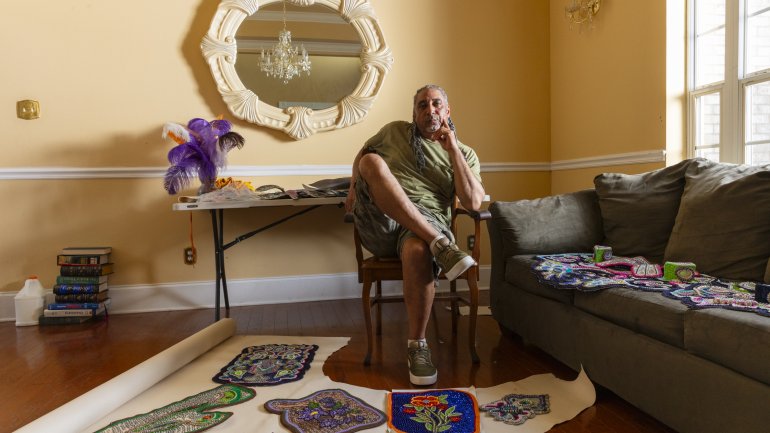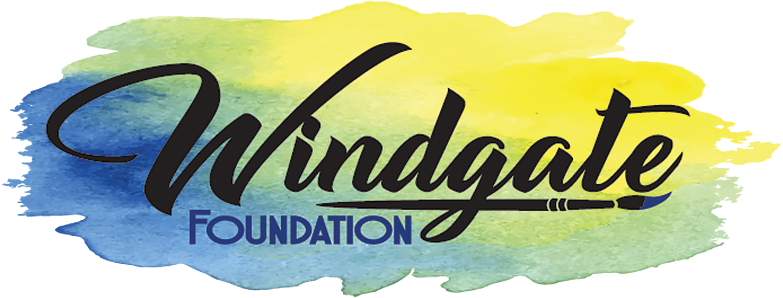The Scene: Charles DuVernay
The Scene: Charles DuVernay
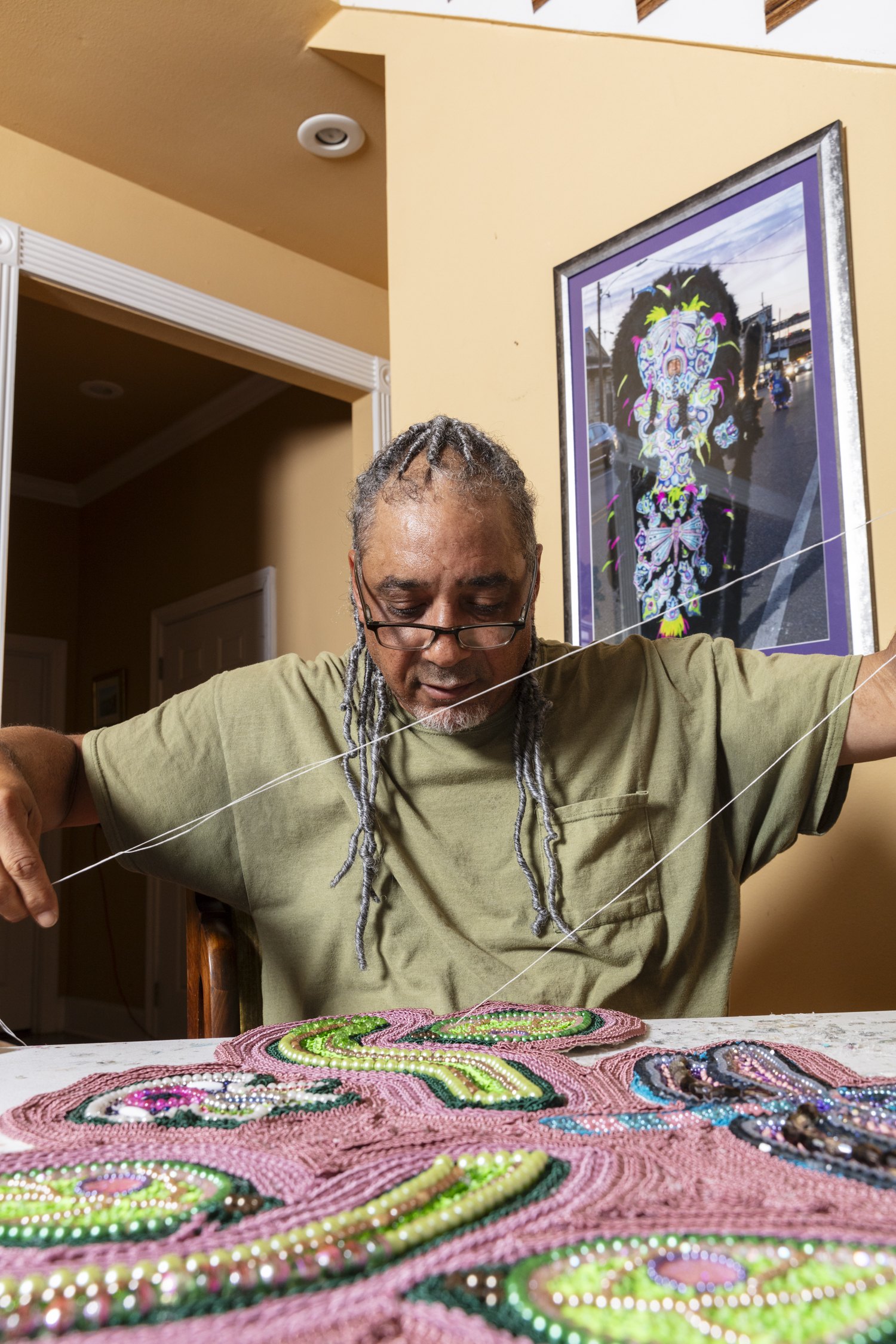
DuVernay grew up in the 7th Ward in downtown New Orleans, a cultural hub for Black Masking Indians, also known as Mardi Gras Indians. He masks with a tribe called Monogram Hunters; he serves in the Flag Boy position under his uncle, Big Chief Tyrone “Pie” Stevenson. After Carnival is over, DuVernay takes apart his elaborate hand-beaded suits and creates tapestries from them, making new artworks. When compared to other places he’s lived and visited, DuVernay says the New Orleans craft scene stands out. “It comes to life. It’s not stuff that’s just, you know, hanging on displays or on walls or enclosed in glass. That’s one of the things I totally appreciate about Mardi Gras time—you put all that time, all that effort, all that work into it, but you get to wear your art and walk it down the street. It is art that comes to life.” He acknowledges that the local market is small. “There are a lot of talented artists but only so many venues you can get into. So money gets tight. Look at some of the Indians around town. They already create gorgeous work. But if you gave one of them $20,000 to spend on an Indian suit, it would be indescribably gorgeous. They have the talent—money is their only hindrance.”
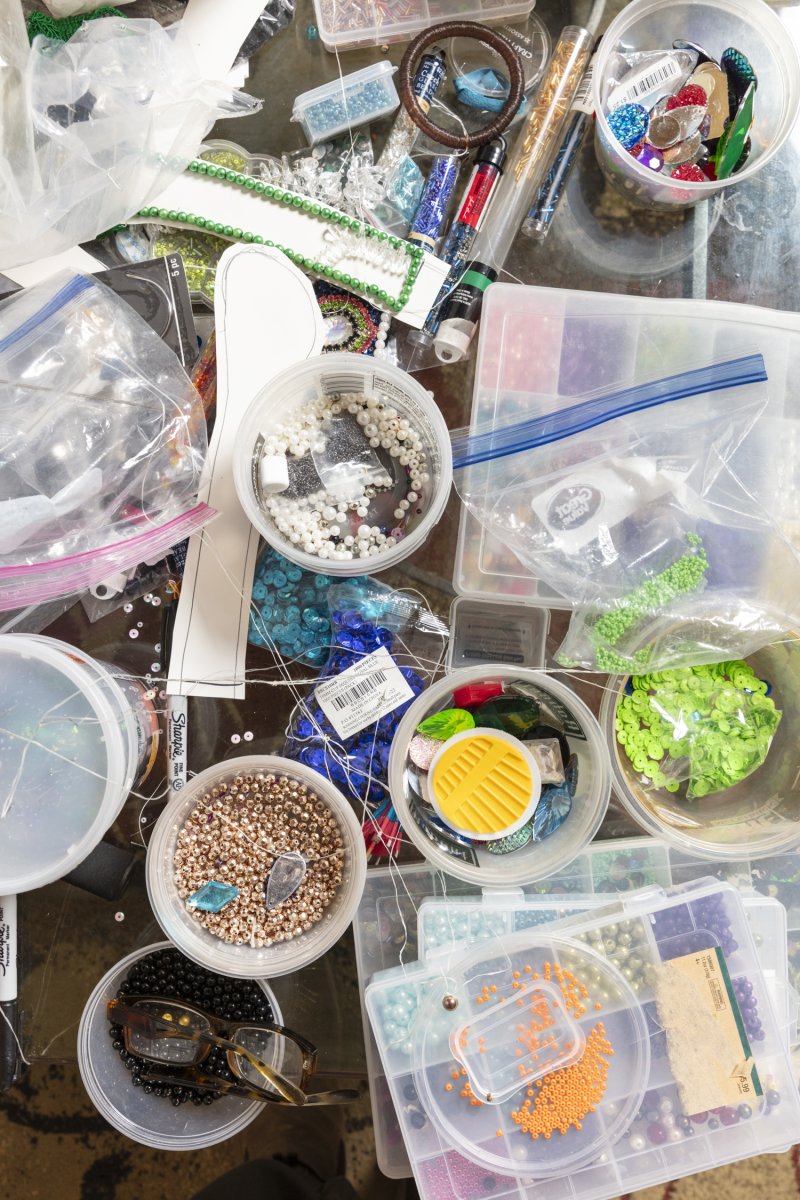
A table full of beads and supplies. Photo by Cedric Angeles.
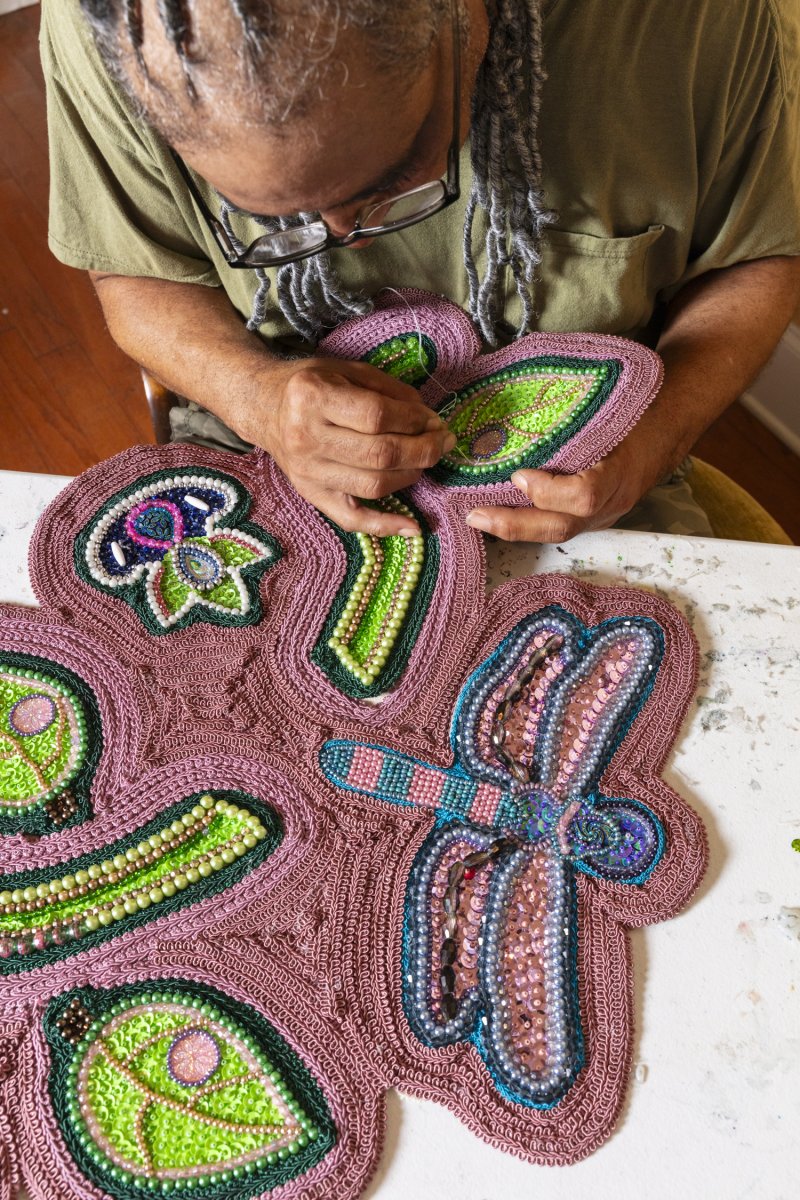
DuVernay at work. Photo by Cedric Angeles.
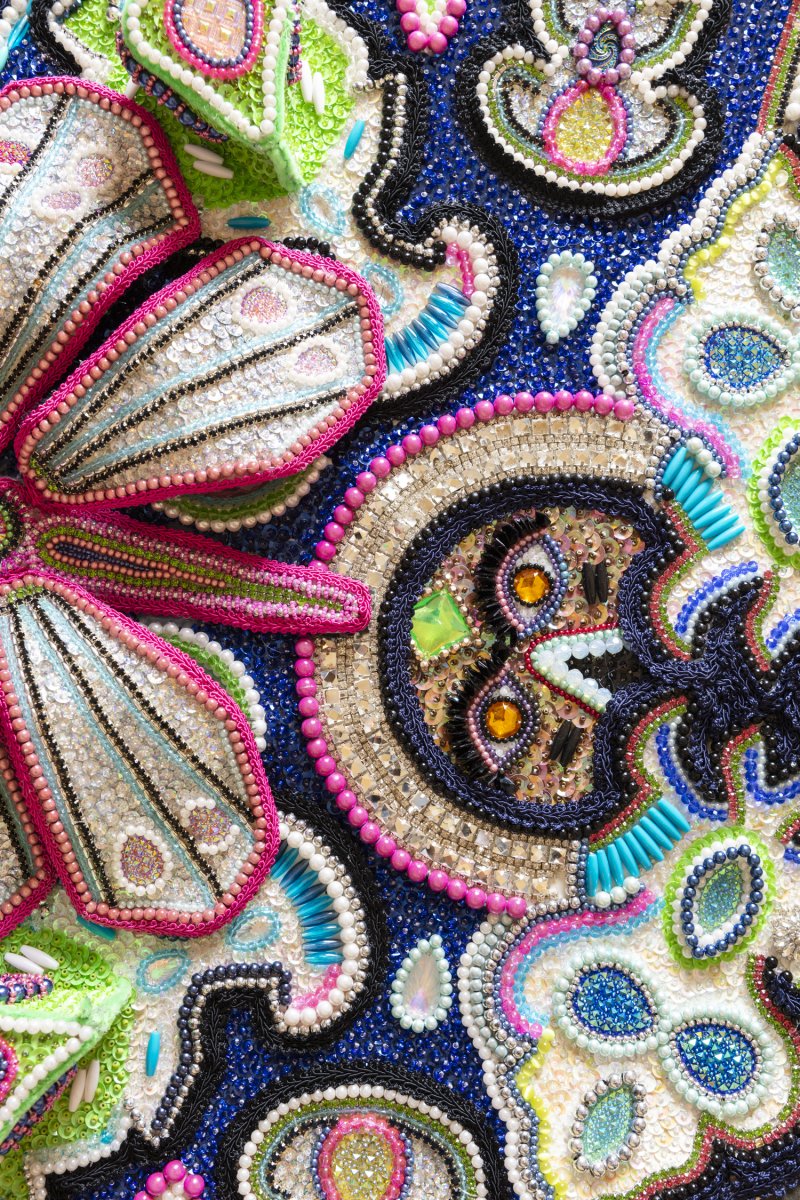
DuVernay’s creations. Photo by Cedric Angeles.
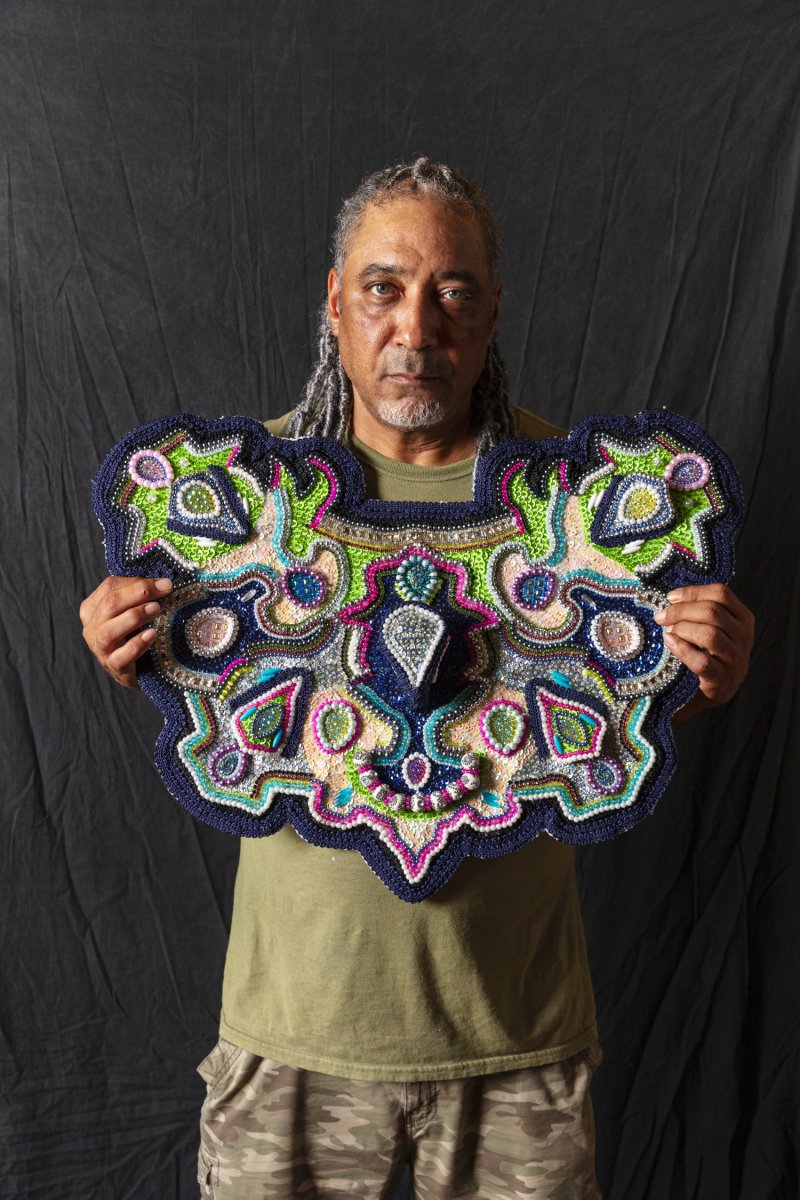
By making new artworks, DuVernay gives his Mardi Gras suits, which can take thousands of hours to create, a second life. Photo by Cedric Angeles.
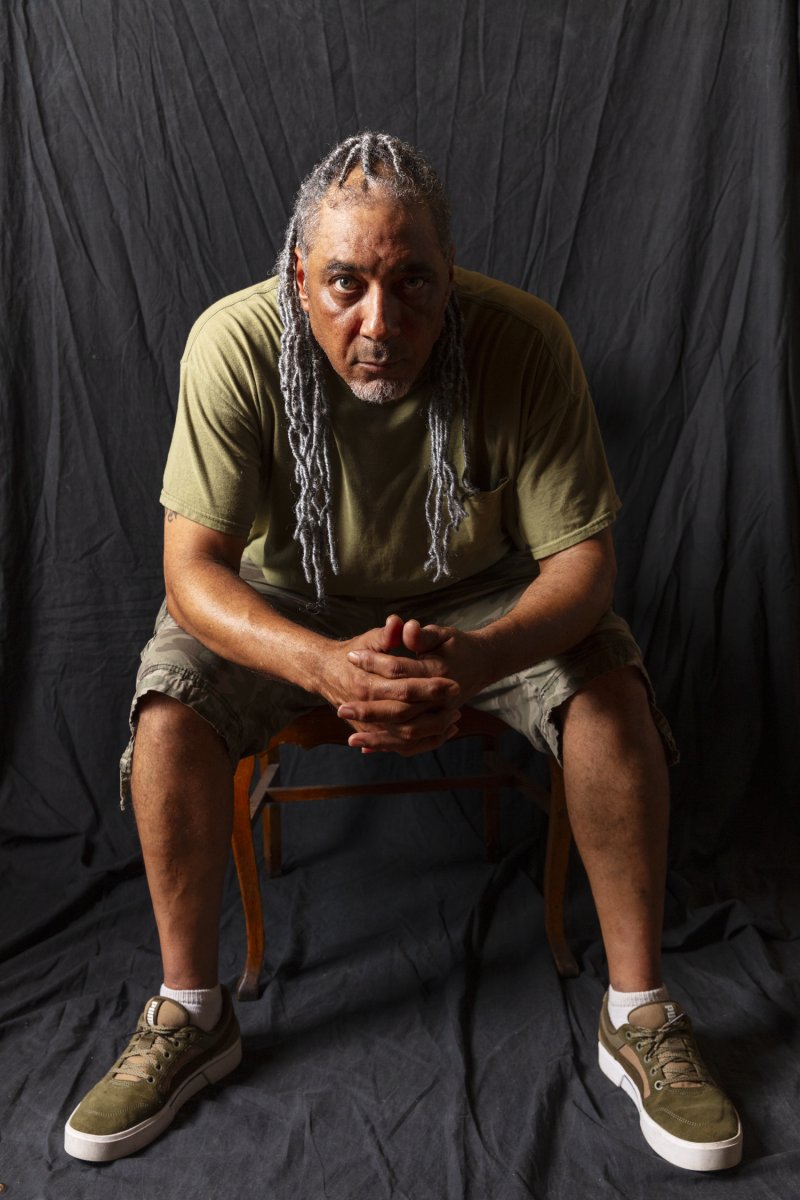
Charles DuVernay. Photo by Cedric Angeles.
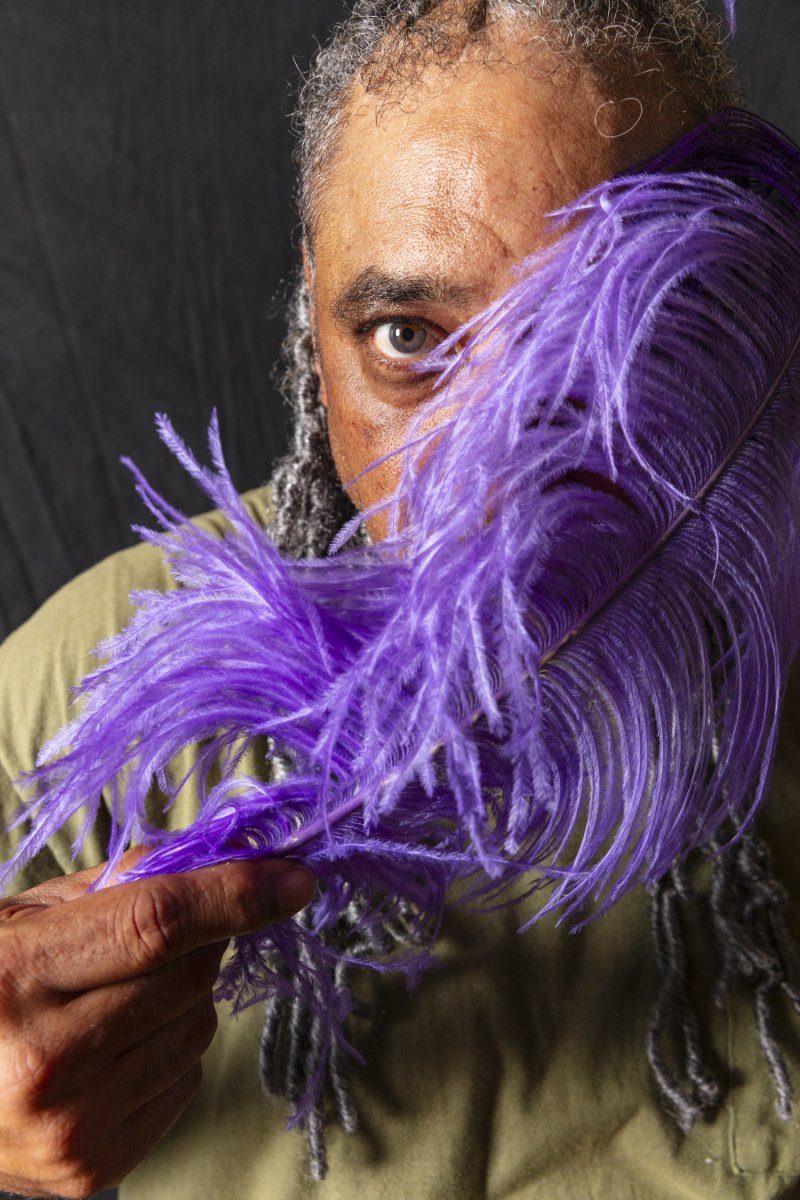
Charles DuVernay with a purple feather. Photo by Cedric Angeles.
ARTISTS DUVERNAY ADMIRES: Beader and suit maker Big Chief Demond Melancon of the Young Seminole Hunters; the late chief of chiefs Allison “Tootie” Montana, who was an iconic beader and 3D suit maker; Big Chief Alphonse “Dowee” Robair of the 9th Ward Black Hatchets; his cousin, Big Chief Tyrone “Pie” Stevenson of the Monogram Hunters; and his late grandfather, carpenter Otis DuVernay.
